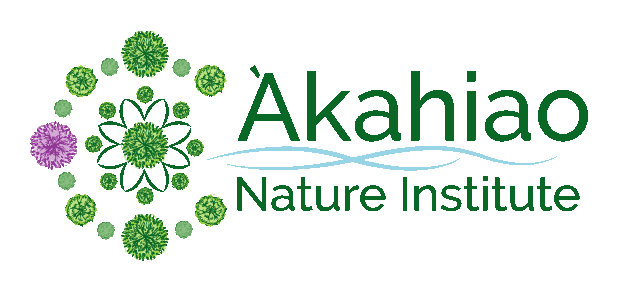Lāʻau Lāpaʻau: Native Plant Allies
Updated: Dec 13, 2021
We are in cold and flu season, a pertinent time for self-care and nourishing our health and well-being. Below are a few native plants that address a variety of health concerns, and can easily be brewed into a tea.
With any herbal plant medicine you consume, it is always best practice to ask the plant for permission before picking and wait for a confirmation to be shown to you in some way, it may be as simple as the wind moving through the leaves. When it feels right then go ahead and harvest only what you need. Before consuming the plant medicine, state your intention clearly and ask the plant to help aid and heal you in whichever way you need, and be specific and include your name in the statement. That is what I learned from our kūpuna, and it helps make this a ritualist practice and personal ceremony of healing. May we all be healthy and happy this season. Stay well, everyone.

Māmaki (Pipturus albidus)
The māmaki is a well-known plant that is coveted for its medicinal properties, and it is one of the few native plants being commercially grown for consumption. It is endemic to Hawaiʻi but belongs to the family of nettles. Due to evolution, the māmaki no longer has those painful stinging hairs that nettles are known for because it no longer needed that defense mechanism to survive.
Hawaiians traditionally used māmaki as lāʻau lapaʻau (herbal medicine) during ceremonies and for healing purposes. The fruit and seeds were used as a laxative and were also given to women to aid in the birthing process. The wood of the māmaki was more practically used for making clubs and other implements like iʻe kūkū (kapa beaters), and the roots were used to make a yellow dye. I once learned from a kahuna of lāʻau lapaʻau that māmaki is best served as a hot tea for healing benefits and that it should be consumed sparingly and only when needed. He discouraged drinking it as a cold tea. Other health benefits of drinking māmaki include: soothing the nervous system, detoxing,
The māmaki is also a host plant for Hawaiʻis two endemic butterflies, the Pulelehua, commonly known as the Kamehameha butterfly (Vanessa tameamea) and the Blackburn butterfly (Udara blackburni), both of which are rare and endangered. It's best to avoid spraying māmaki with any chemicals to prevent potential exposure to these native butterfly species. The chrysalis will wrap itself up in a dried leaf, making it difficult to visually identify.
If you are interested in propagating māmaki there are many different ways to get started, but if you would like to start it from seed, gather the tiny white fruits of the plant, and squish out the seeds. Using a strainer can be helpful with this step. Once you have removed the seeds, pop them into a bowl of water, and only keep the seeds that sink. The floating seeds will not be viable. From there, drain the water, and scatter the seeds in your garden to grow. Ola!

Koʻokoʻolau (Bidens)
Koʻokoʻolau is endemic to Hawaiʻi, with 19 species of Bidens. Bidens are a member of the Aster or Sunflower family (Asteraceae). You might also know its introcued and invasive cousin, the Spanish Needle (Bidens pilosa), which also has many medicinal properties. The Bidens are amazing at fighting infections and viruses. All parts of the plant are medicinally active, including the roots.
Koʻokoʻolau has been used to concoct herbal teas made from leaves. The tea can be used to soothe the throat and ease asthma symptoms. Along with treating stomach issues such as constipation, colon and bowel problems. It can stimulate the appetite, and also prevent strokes and diabetes. The flowers were often mixed with the Mamaki leaves to increase potency.
p.c. kalehua.net

ʻUhaloa (Waltheria indica)
ʻUhaloa is known throughout Polynesia as a medicinal plant, and it may have been introduced by early Polynesian settlers. ʻUhaloa is one that can be easily foraged along the shores and coastlines of Kona. It prefers growing in drier climate conditions, and is found in disturbed areas (ie. along roadways).
ʻUhaloa was one of the first medicinal plants I remember learning about. I remember being a little girl and a kupuna one told me this plant was good for breathing issues. I was very familiar with that struggle as I grew up dealing with severe asthma. Ever since this plant has been one I keep in my medicine cabinet.
Traditionally this plant was used internally and externally to treat respiratory issues such as asthma and bronchitis, consumed as an oral rinse, and applied to the body to decrease inflammation. For respiratory problems, it is said that the juice from the roots, leaves, flowers, and buds were pressed to create tea. Early Hawaiians also chewed the bark of the roots and swallowed the juice, to help heal sore throats. For increased effectiveness and healing potency, ʻuhaloa was also combined with other plants.







Comments